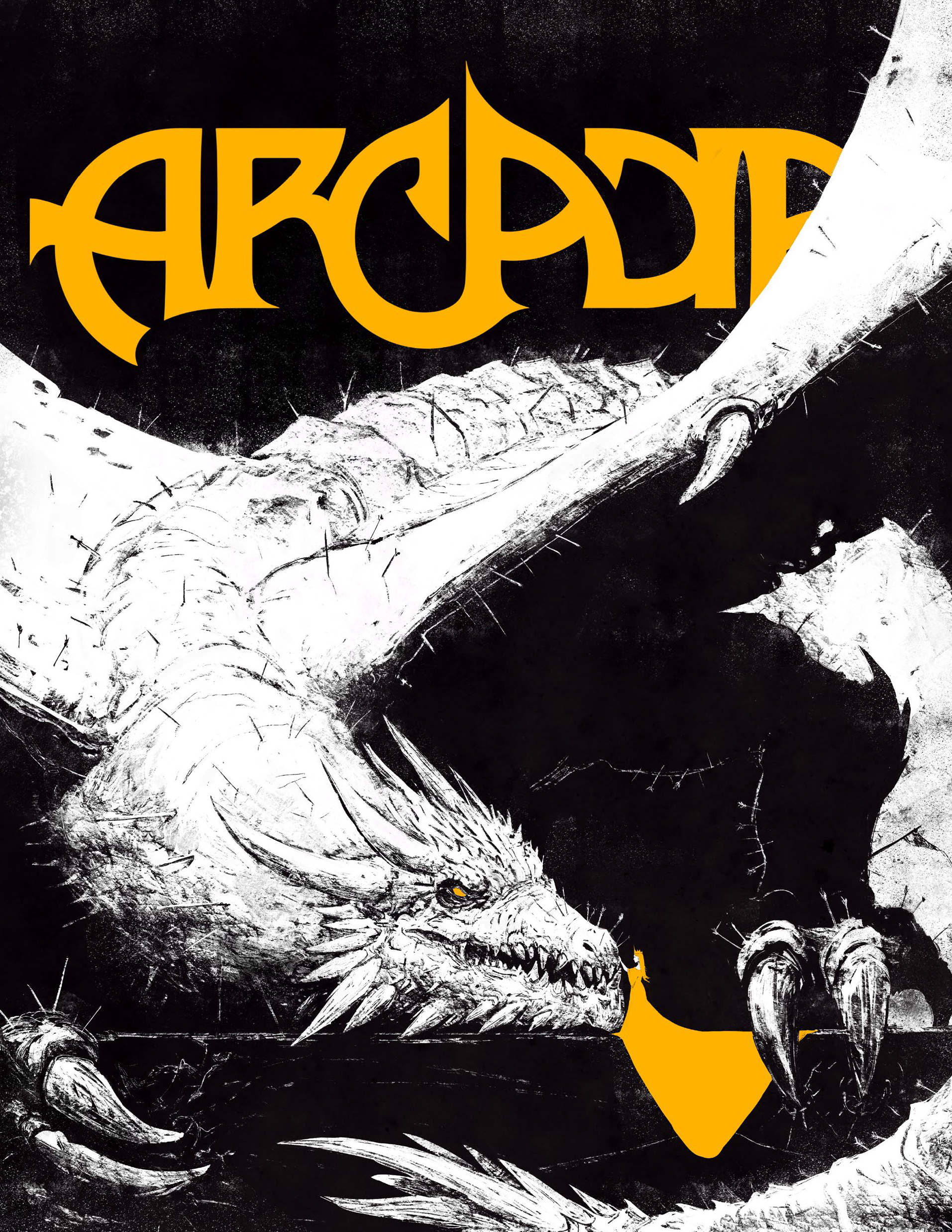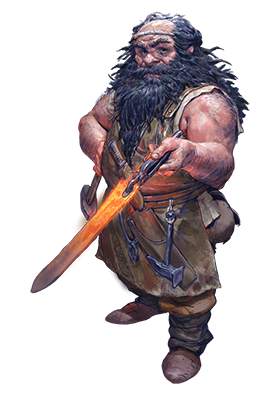The Warrior Class Playtest
December 01, 2022
No, not actually. Well—it’s not out yet! Wizards just dropped the playtest for the Cleric class and revised Goliath, Ardling, and Dragonborn. But I’m not here to talk about that!
The previous day, Todd Kenreck and Jeremy Crawford released a video talking about the past OneD&D playtest documents and the survey results, and part of what they talked about is the Warrior class group and it’s relationship with the changes to the Great Weapon Master and Sharpshooter feats.
The link to that video is here, it’s fascinating and well worth watching if anything I talk about in these articles is of interest to you.
So I want to talk about the Warrior group, and what Jeremy Crawford might be meaning when he talks about interesting weapon options going forward.
First, keep in mind that Maneuvers are kind of my jam so I have a predisposition to thinking they are a good way to address martial character disparity with spellcasters. I’ve released a Variant Fighter, a Fighting Maneuvers document for replacing Fighting Styles, and the Group Maneuvers article in MCDM’s ARCADIA #13. I’ve studied martial characters inside and out and I’d like to think I know what I’m talking about here, but feel free to reach out to me on Twitter @vorpaldicepress to tell me where I’m wrong!
Weapon Options
Jeremy Crawford speaks enthusiastically about upcoming weapon options for OneD&D’s Warrior Group and we don’t really know what that means just yet. I’m salivating to find out, but in the mean time there are at least three things we might see, and I’ll try and summarize my predictions here.
Improved Weapon Actions
I want to draw attention to the Unarmed Strike rules from the OneD&D Playtest so far.
Unarmed Strike
An Unarmed Strike is a melee attack that involves you using your body to damage, grapple, or shove a target within your Reach.
Your bonus to hit with an Unarmed Strike equals your Strength modifier plus your Proficiency Bonus. On a hit, your Unarmed Strike causes one of the following effects of your choice:
Damage. The target takes Bludgeoning Damage equal to 1 + your Strength modifier.
Grapple. The target is Grappled, and the grapple’s escape DC equals 8 + your Strength modifier + your Proficiency Bonus. This grapple is possible only if the target is no more than one Size larger than you and if you have a hand free to grab the target.
Shove. You either push the target 5 feet away or knock the target Prone. This shove is possible only if the target is no more than one Size larger than you.
The decision to build the Grapple and Shove rules directly into Unarmed Strikes makes me think there is a possibility that Wizards of the Coast might add similar types of rules to Weapon Attacks of all kinds.
For example, Polearms (which appear to be any melee weapon with the Reach property) might get a similar writeup to the above, that could read something like this:
Polearm Strike
A Polearm Strike is a melee attack that involves attacking with any weapon with the Reach property.
On a hit, your Polearm Strike causes one of the following effects of your choice:
Damage. The target takes the weapon’s regular weapon damage.
Sweep. You knock the target Prone.
Pin. If the target is Prone, you can Restrain them until the start of your next turn. While Restrained, the target can use its action to make a DC 15 Strength saving throw, ending the Restrained condition on a success.
Of the suggestions I’m laying out here, I think this the least likely as it would apply too generally and from the way Jeremy Crawford is speaking, it sounds like these weapon options are going to be big for the Warrior class. A Ranger or Rogue (not part of the Warrior class) could benefit equally from something like the above.
Improved Weapon Properties
For this, I point to the Light Weapon Property in the OneD&D Playtest packets.
Light [Weapon Property]
When you take the Attack Action on your turn and attack with a Light weapon in one hand, you can make one extra attack as part of the same Action. That extra attack must be made with a different Light weapon in the other hand, and you don’t add your Ability Modifier to the extra attack’s damage. You can make this extra attack only once on each of your turns.
For example, if you take the Attack Action on your turn and have a Shortsword in one hand and a Dagger in the other—each of which has the Light property—you can make one attack with each weapon, but you don’t add your Strength or Dexterity Modifier to the damage roll of the second weapon.
So this used to be its own rule: Two-Weapon Fighting. Now it’s baked into the Property of the weapon itself.
This gives me the idea that we might see similar things built into other properties, like the Heavy property for example.
Consider the possibility of:
Heavy [Weapon Property]
When you take the Attack Action on your turn and attack with a Heavy weapon, you can choose to take a -5 penalty to your attack roll. If you do, and hit with your attack, the attack deals an extra 10 damage. You can deal this extra damage only once on each of your turns.
Now I don’t think we’re actually going to see this in this form, but I mean. Maybe?
You could build similar types of improved weapon properties into things like the Thrown, Finesse, or Reach properties.
This idea, while simple and effective, has the same philosophical issue as the first suggestion though: This effects the system too generally, so it would benefit non Warrior’s as much as it would Warriors.
That being said, Warriors could have a feature that said something along the lines of: “You can activate a weapon property more than once on your turn.” which would basically bring it back lock-step with 5E for Great Weapon Fighters. That would be interesting for sure, especially with the Light property.
Weapon Maneuvers
Okay so this one is my pie-in-the-sky idea. Would Wizards of the Coast have the cahones to pull something like this out for OneD&D? I don’t know, but it’s very possible.
This is a bit more indepth than the other two suggestions so bare with me as I explain.
The “Warrior” class group would gain a Weapon Maneuver system that would look and function similarly to Spellcasting. Each of the three Warrior classes: Fighter, Barbarian, and Monk would get a Weapon Maneuver ‘slots’ table that looks exactly like a Half-Caster’s Spell Slots table.
The Maneuvers get presented like spells, with a few differences:
Maneuvers would have no Level; Slots become called Executions, and Slot Levels become Challenge Level. Using a higher Challenge Level than 1st increases the effect of the maneuver.
Casting Time becomes Action Type, and is limited to “Attack Action”, “Bonus Action”, “Jump” or “Move”, and “Reaction”
Range remains the same as Spells, but for melee weapons can reference Reach to cover the reach of the creature executing the maneuver and any improvements they get from weapon types, size, or other features.
Materials is replaced with “Weapon Required” and lists either the specific weapons, or types of weapons required to perform the maneuver. Some generalized maneuvers might be blank (or say ‘any’). This section might also say “Unarmed Strikes”, too.
Duration would be gone, as the effects would always be instantaneous.
Maneuver Executions would recharge likely on a Short Rest, instead of a Long Rest, and the general ‘effect’ of maneuvers would be lower than that of spells as they would all be roughly equivalent to a Smite spell (a single attack rider effect).
Here’s a few examples:
Vaulting Strike
Action Type: Jump
Range: Reach
Weapon Required: Any weapon with the Reach property
While taking the Jump action, you use your weapon to propel yourself into a vaulting strike. The DC for the Strength Check becomes 15, and on a successful check, you can clear up to twice the normal distance and make a single Weapon Attack against a creature after landing.
At Higher Levels. The Weapon Attack you make deals an additional 1d8 damage for each Challenge Tier above 1st.
or maybe
Cleave
Action Type: Attack Action
Range: Reach
Weapon Required: Any weapon with the Two-Handed property
As part of an attack with a Two-Handed weapon, you can cleave through into another creature of your choice within 5 feet of the target and also within your reach. Use the result of the original Attack Roll to determine if you hit the new target. On a successful hit, they take damage equal to your Strength modifier.
At Higher Levels. You can choose an additional target to cleave into for each Challenge Tier above 1st. If you execute this maneuver with a Challenge Tier of 3rd or higher, each target take additional damage equal to your Proficiency Bonus, including the target of the original attack.
I don’t know how many of these maneuvers there would need to be for the system to feel complete. Certainly at least 3–4 for each category or 2–3 with some overlap, to make the decisions feel meaningful and allow for variety.
I’d probably also imagine maneuvers would be prepared, so you could switch up the ones you know as you change your equipment. That’s in line with what OneD&D is doing so far and I think best fits the direction the game is moving towards. It helps to alleviate choice paralysis in early levels (you can always fix it by taking a rest) and lets players experiment without wishing for their character to die off so they can make different choices for Joe Fighter the Second.
And I know what you’re thinking if I haven’t sold you with this idea yet: Wow, this really sounds a lot like 4E. Yeah. I’m sorry (not sorry) but 4E is a great game and one of the things it did really well was Martials. And yes, Martials played basically exactly the same as Casters, and that was a common criticism. I think the above is just different enough that a Caster (Long Rest, levelled spells they learn as they level) and Martial (Short Rest, improving base maneuvers as they level) would feel distinctly different.
It also opens the door for some neat mechanics like Ranger being able to take a few Maneuvers and use Spell Slots like Executions (with some additional benefit, as the Long Rest recharge adds budget), or a Warlock using their Short Rest slots to execute Maneuvers and feel even more Martial-like.
Summary
Are these good ideas for OneD&D? I don’t know. I think the last one has a lot of merit, and the others are simple ways to build in some depth to Martials without risk of overdesigning the concept.
Whatever Jeremy Crawford and the team have in store—which sounds like it’s fairly well conceptualized at this point (so if what I suggested here is close, it’s just kismet and nothing else)—I am eagerly ready to look at it. So eager that I basically skipped over the current playtest document! Look forward to my comments on that in the coming weeks.
I have a lot of faith in OneD&D, despite the my own objections to certain aspects of it. As a Game Designer, I’ll never be completely happy with any edition or revision of D&D and find ways to tinker with or improve on the core content.












